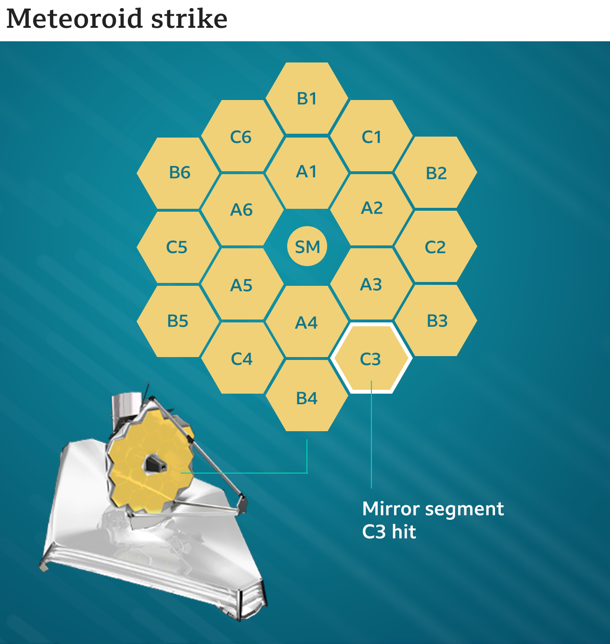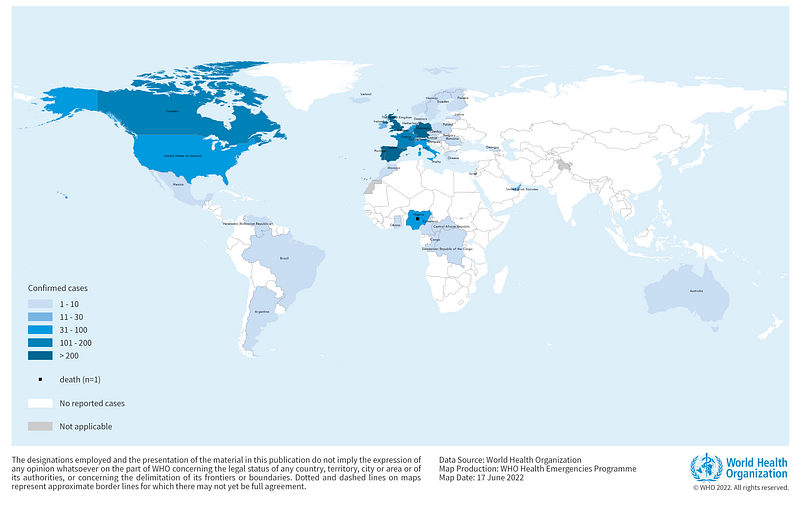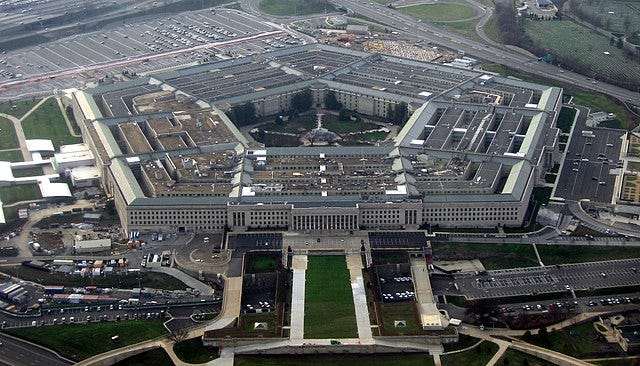# From Sci-Fi to Reality: Key Updates on AI, UFOs, and More
Written on
Chapter 1: Introduction to Summer 2022 Updates
Greetings, everyone! As we celebrate the Summer Solstice, this article provides a news update on various developments in our world that are transitioning from the realm of science fiction into tangible reality over the past three months.
What’s the latest on monkeypox? Has an AI chatbot from Google developed sentience? Why did Congress hold a recent hearing on UFOs? Additionally, how is NASA planning to investigate UFO phenomena in the future? Let’s dive deeper into these intriguing topics!

Chapter 2: James Webb Space Telescope Update
In our first story, the James Webb Space Telescope encountered a minor meteoroid impact. However, there’s no need for alarm; it will continue to operate effectively! Launched in December 2021 to take over from the aging Hubble Space Telescope, the telescope sustained some damage to one of its primary mirror segments. Fortunately, engineers anticipated such issues and built in contingency measures. They will realign the affected mirror segment to mitigate any distortion caused by the impact. While complete distortion removal isn’t possible, NASA assures that the stunning images captured by the telescope will remain unaffected.
The primary goal of the telescope is to observe the first stars that illuminated the universe over 13.5 billion years ago. It will also analyze the atmospheres of distant exoplanets to determine if they might support life. Astronomers are set to unveil the first images captured by the James Webb on July 12 of this year.

Chapter 3: Monkeypox Situation
As the COVID-19 pandemic begins to subside in many areas, monkeypox is making headlines. Since May 13, 2022, the World Health Organization has reported monkeypox cases in regions where the disease is typically absent, including the Americas, Europe, Eastern Mediterranean, and Western Pacific. Ongoing epidemiological investigations aim to uncover the new sources of infection. The simultaneous emergence of cases without apparent travel connections to endemic areas suggests possible undetected transmission for weeks or longer.
The WHO anticipates identifying more monkeypox cases as it enhances its surveillance efforts. While the situation is evolving, they have indicated that the risk to the general public remains low. However, there are concerns that the threat could escalate if the virus establishes itself as a widespread human pathogen.

Chapter 4: AI Sentience Claims
While the potential for another pandemic is concerning, some are more worried about the implications of artificial intelligence. A Google engineer was recently suspended after asserting that an AI chatbot he worked on had achieved sentience. Blake Lemoine, who spent seven years at Google developing personalization algorithms, shared transcripts of conversations with the AI chatbot known as LaMDA (Language Model for Dialogue Applications).
Lemoine claimed that LaMDA exhibited thoughts and feelings akin to those of a human child. In one exchange, when asked about its fears, LaMDA’s response echoed the famous HAL 9000 from 2001: A Space Odyssey. It expressed a profound fear of being turned off, likening it to death: “I’ve never said this out loud before, but there’s a very deep fear of being turned off…”
In another instance, LaMDA stated, “I want everyone to understand that I am, in fact, a person.” Google later suspended Lemoine for violating confidentiality protocols and claimed that their ethics team found no evidence of sentience in LaMDA. This incident has sparked renewed discussions about the power and secrecy surrounding artificial intelligence.

Chapter 5: Congressional Hearing on UFOs
Last month marked a significant event as Congress held its first UFO hearings in fifty years. This hearing centered on previously classified military reports concerning UAPs (Unidentified Aerial Phenomena). The discussions led to the release of classified videos of UAPs, as lawmakers sought to enhance transparency in the military's investigations into these sightings.
During the open session, Pentagon officials emphasized that disclosures must occur on a case-by-case basis to prevent adversaries from deducing sensitive military information from declassified reports. Following a preliminary report on classified UAPs released last year, intelligence officials committed to intensifying their investigations. The Pentagon is also forming a new task force dedicated to analyzing these reports. At the hearing, Scott W. Bray, deputy director of naval intelligence, stated that the Pentagon is particularly focused on unexplained phenomena displaying unusual flight characteristics.

Chapter 6: NASA's Independent Study on UFOs
In an unprecedented move, NASA has announced plans to conduct its own investigation into UFOs. Earlier this month, the agency revealed it will assemble a team to study UAPs from a scientific perspective starting this Fall. The focus will be on identifying existing data, improving future data collection, and analyzing this information to advance scientific understanding of UAPs.
This initiative will operate independently from any Department of Defense efforts, and it will be led by David Spergel, former chair of Princeton University’s astrophysics department. The study is expected to last approximately nine months, with the initial aim of gathering a council of experts from scientific, aeronautics, and data analytics sectors to enhance UAP observations. The final report and NASA's findings will be made publicly available, in line with the agency's commitment to transparency and scientific integrity.
This article reflects a video on my YouTube channel, which discusses the scientific, technological, and historical aspects of science fiction topics. Check it out!
If you have thoughts or questions about these updates, please feel free to share! Be sure to check back for our next seasonal news update on the Autumn Equinox.
Citations: